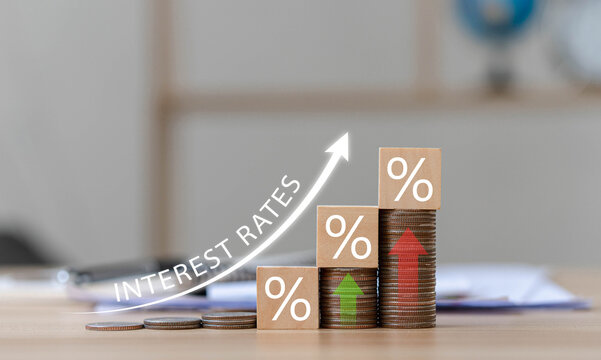
The Real story behind real interest rate
- April 10, 2023
- 0
Mr. Saver is two-year FD will get him 8 per cent interest. As the inflation for the next financial year is projected at 5.3 per cent, he will earn 2.7 per cent on his deposits. That’s a real interest rate for him.
Of course, he needs to pay tax on his interest income and so, his actual earning will be much less but the real interest does not account for tax outgo. It’s the difference between the nominal interest rate and the expected inflation rate. In other words, it represents the real return on savings and the real cost of borrowing.
For the saving community globally, high inflation has been eroding the value of money. Everyone is talking about the “real” interest rate. In India, how much interest should one get from the government’s small savings schemes and how much from bank deposits and other saving instruments? Inflation-adjusted “real” interest rate matters the most as inflation reduces the value of future cash flows.
The exact quantum of real rate depends on the state of the economy, but how do we calculate the real rate? What is the ideal benchmark rate to calculate it? Should it be bank deposit rates? If not bank deposits, the central bank’s policy rate? The 10-year bond yield? Or the yield of a one-year treasury bill?
A March 2020 International Monetary Fund paper says that while there are many different interest rates in financial markets, the policy interest rate set by a country’s central bank provides the key benchmark for borrowing costs in the country’s economy. Central banks very the policy rate in response to changes in the economic cycle and the steer the country’s economy by influencing many different (mainly short-term) interest rates. Higher policy rates provide incentives for saving, while lower rates motivate consumption and reduce the cost of business investment.
Savers seeing their money losing its purchasing power is not new in India. Between 2012 and 2014 for three successive years, the average inflation was 8.22 per cent, making the real interest rate negative for savers. Between 2015 and 2019, the real rate was mostly positive as the policy rate was higher than inflation rate. For instance, between August 2018 and September 2019, the inflation rate was lower than 4 per cent while policy rate hovered between 5.4 per cent and 6.5 per cent.
It was at an eight-year high of 7.79 per cent in April 2022 and had been above the upper limit of the central bank’s flexible inflation target for 10 months in a row between January and October 2022.
While the debate will continue about what should be the benchmark rate to calculate real interest rate, both for the lenders and the savers shouldn’t all rates be higher than the rate of inflation? If this is ensured, it will have a positive impact on the savings to GDP ratio, which is at its 19-year low now.
Tamal Bandyopadhyay
वास्तविक ब्याज दर की असल कहानी
बचतकर्ताओं को दो वर्ष की एफडी पर 8 प्रतिशत ब्याज मिलेगा। जबकि इस बीच महंगाई 5.3 प्रतिशत स्तर पर रहने का अनुमान लगाया गया है। यानी वास्तविक ब्याज दर 2.7 प्रतिशत रह जाएगी।
यह भी सच है कि बचतकर्ताओं को अर्जित ब्याज पर कर भी देना होगा, जिससे उनकी वास्तविक कमाई काफी कम रह जाएगी। मगर वास्तविक ब्याज दर कराधान को ध्यान में नहीं रखता है। यह नॉमिनल ब्याज दर (महंगाई समायोजन के बिना) और वास्तविक ब्याज दरों का अंतर होती है। दूसरे शब्दों में कहें, तो वास्तविक दर बचत पर वास्तविक प्रतिफल और उधारी पर वास्तविक लागत दर्शाती है।
दुनिया भर में महंगाई, मुद्रा के मूल्य का ह्रास कर रही है। सभी अब ‘वास्तविक‘ ब्याज दर की बात कर रहे है। भारत में लोगों को सरकार की लघु बचत योजनाओं पर और बैंक जमा एवं अन्य बचत योजनाओं से कितना ब्याज मिलना चाहिए? महंगाई समायोजित करने के बाद प्राप्त वास्तविक ब्याज पर सर्वाधिक मायने रखती है। इसका कारण यह है कि महंगाई भविष्य में होने वाली नकदी प्रवाह पर असर डालती है।
वास्तविक दर अर्थव्यवस्था की हालत पर निर्भर करती है। मगर हम वास्तविक दर की गणना कैसे करते हैं? इसकी गणना करने का वास्तविक मानक क्या है? क्या यह मानक बैंक जमा दर होना चाहिए? या फिर केंद्रीय बैंक की नीतिगत दर मानक होना चाहिए? 10 वर्ष की अवधि या एक साल की अवधि के सरकारी बॉन्ड पर मिलने वाला प्रतिफल गणना का मानक होना चाहिए?
मार्च, 2020 मे जारी अंतराष्ट्रीय मुद्रा कोष (आईएमएफ) के परिपत्र में कहा गया है, कि किसी देश के केंद्रीय बैंक द्वारा निर्धारित नीतिगत ब्याज दर, उधारी पर आने वाली लागत के लिए मुख्य आधार होती है। केंद्रीय बैंक आर्थिक हालात में आने वाले बदलावों को देखते हुए नीतिगत दरों में बदलाव करते हैं। नीतिगत दर अधिक रहने पर लोग अधिक बचत करने के लिए प्रोत्साहित होते हैं, वही कम ब्याज दर उपभोग को बढ़ावा देती है और कारोबारी निवेश पर लागत कम कर देती है।
भारत में लोगों की क्रय शक्ति कमजोर होना कोई नई बात नहीं है। 2012 और 2014 के बीच औसत महंगाई दर 8.22 प्रतिशत थी। इससे बचतकर्ताओं के लिए वास्तविक ब्याज दर नकारात्मक हो गई थी। वर्ष 2015 और 2019 के बीच वास्तविक दर महंगाई दर से अधिक रहने की वजह से ज्यादातर सकारात्मक थीं। उदाहरण के लिए अगस्त 2018 और सितंबर 2019 के बीच महंगाई दर 4 प्रतिशत से कम थी जबकि नीतिगत दर 5.4 और 6.5 प्रतिशत के बीच थी।
अप्रैल 2022 में खुदरा महंगाई 7.79 प्रतिशत पर पहुंच गई थी, जो आठ वर्षों का उच्चतम स्तर था। जनवरी और अक्तुबर 2022 के बीच लगातार दस महीने तक केंद्रीय बैंक के ऊपरी सहज स्तर पर रही थी।
इस बात पर बहस चलती रहेगी, कि वास्तविक ब्याज दरें तय करने के लिए मानक दर क्या होनी चाहिए, मगर कर्जदाता और बचतर्काताओं दोनों के लिए क्या सभी दरें महंगाई दर से अधिक नहीं होनी चाहिए? अगर यह सुनिश्चित किया जाना संभव हो पाया, तो इससे बचत और सकल घरेलू उत्पाद (जीडीपी) के अनुपात पर सकारात्मक असर होगा। यह अनुपात इस समय 19 वर्ष के निचले स्तर पर है।


































































